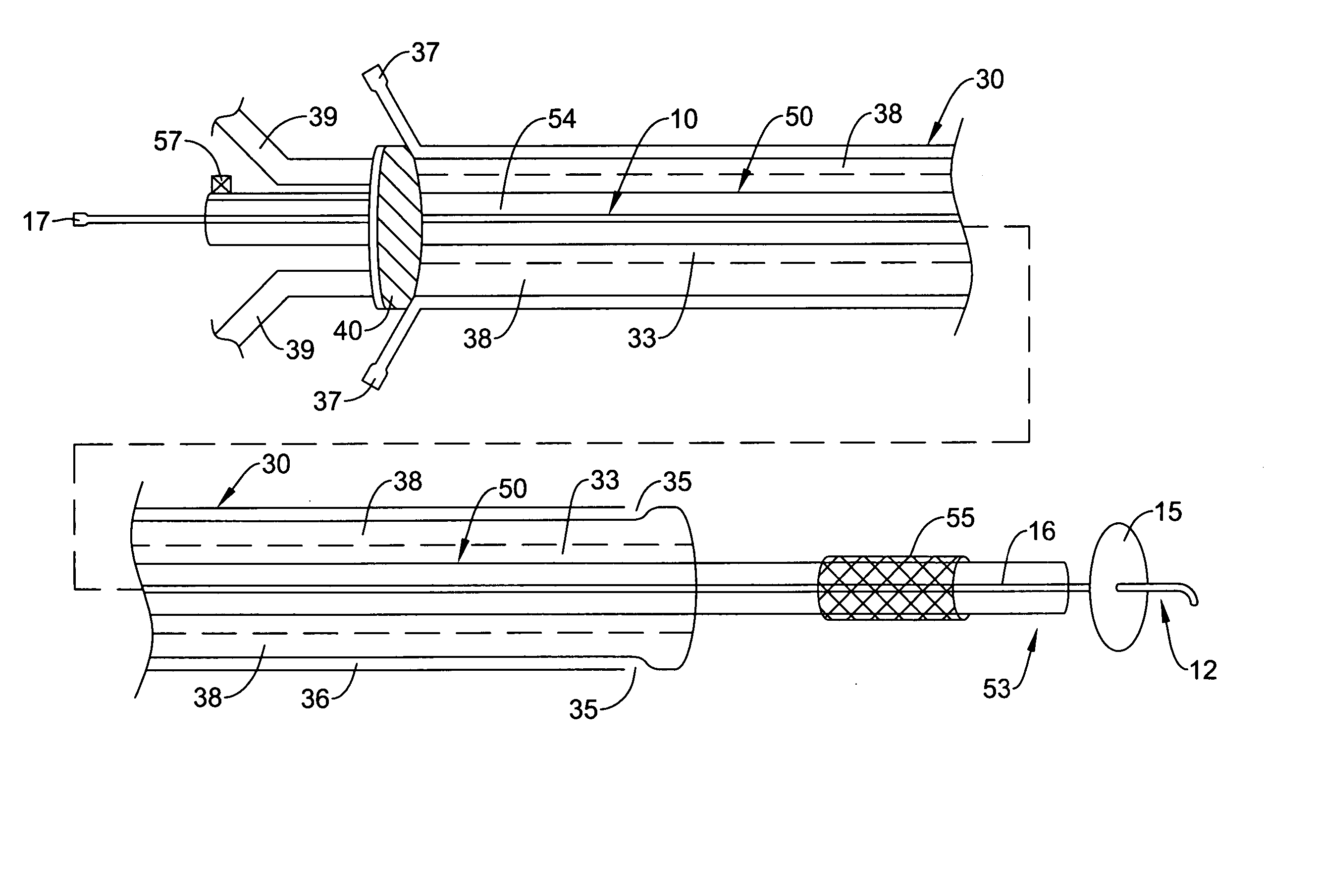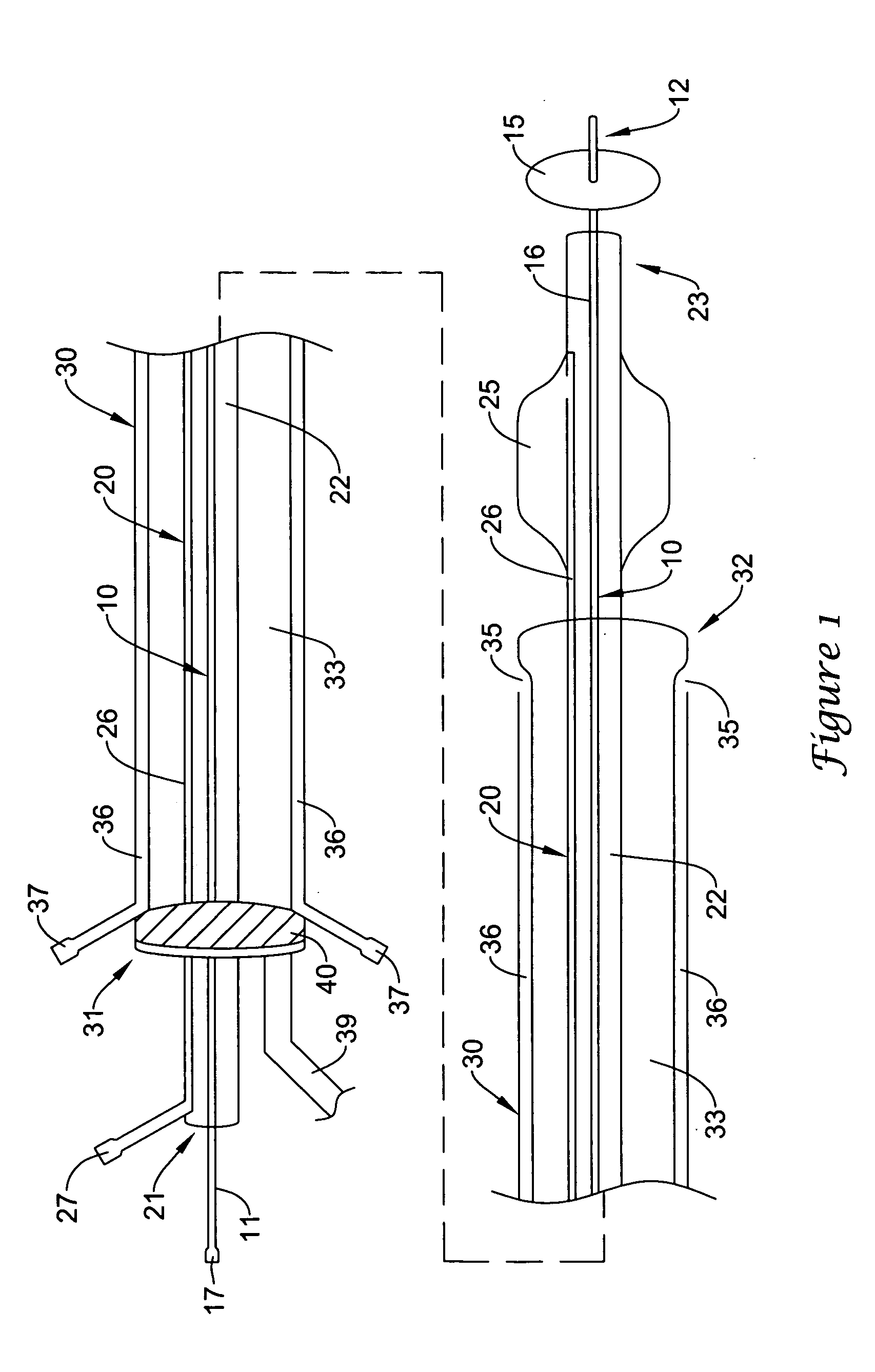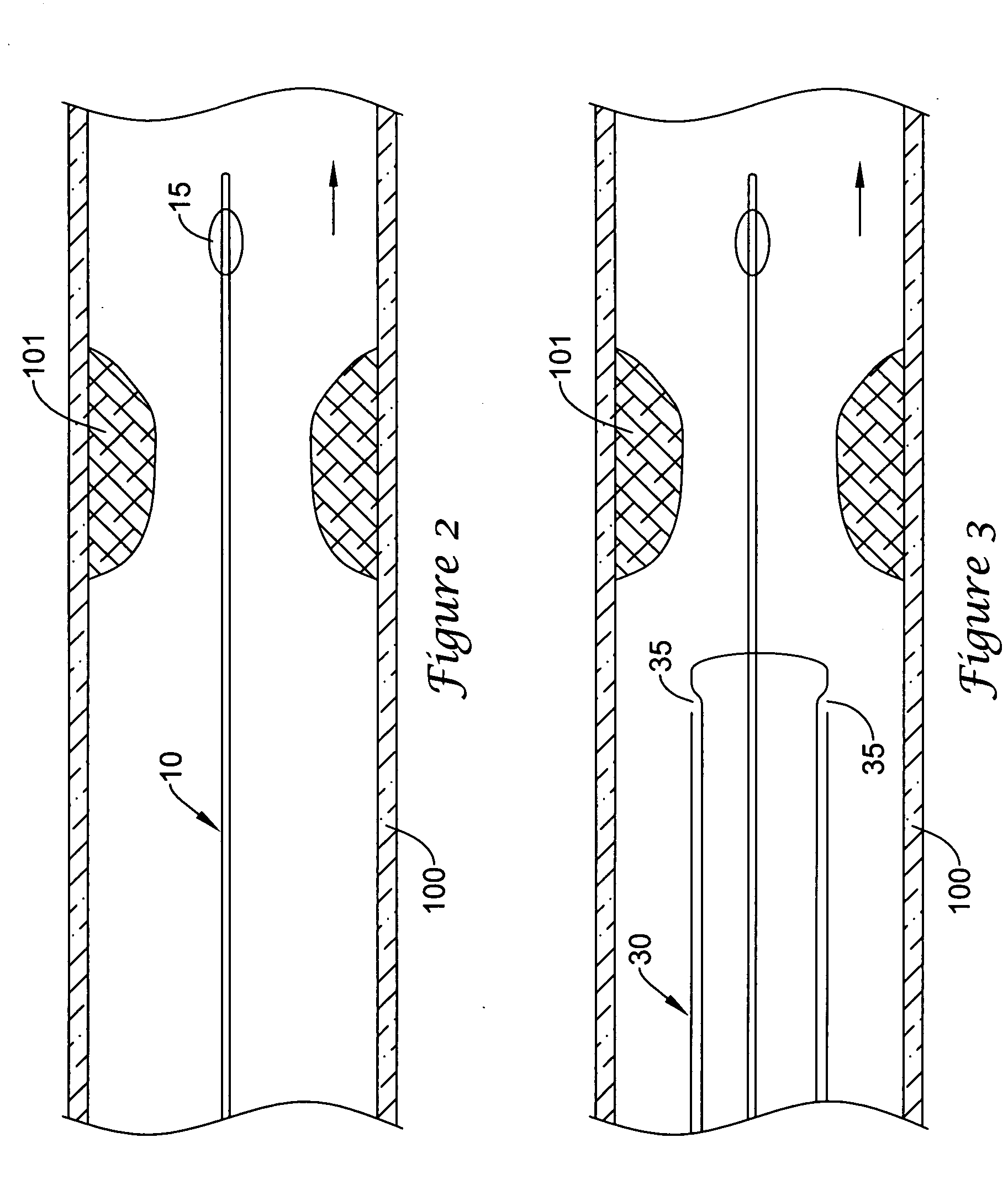Endoluminal occlusion-irrigation catheter with aspiration capabilities and methods of use
- Summary
- Abstract
- Description
- Claims
- Application Information
AI Technical Summary
Benefits of technology
Problems solved by technology
Method used
Image
Examples
Embodiment Construction
[0035] Referring now to the drawings, an embodiment of the catheter system for treating a vascular lesion is depicted in FIG. 1. The system generally comprises guidewire 10, angioplasty catheter 20, and aspiration catheter 30. Guidewire 10 has proximal end 11 and distal end 12. An expandable occluder, shown as balloon 15 which communicates with inflation lumen 16 and proximal port 17, is mounted on distal end 12. Balloon 15 can be expanded by infusing air, gas, or saline through proximal port 17. Guidewire 10 is inserted through lumen 22 of angioplasty catheter 20. Lumen 22 communicates with proximal end 21 and distal end 23. Dilatation member, shown as expandable balloon 25 which communicates with inflation lumen 26 and inflation port 27, is mounted on distal end 23 of the catheter. Dilatation balloon 25 can be expanded by infusing air, gas, or saline through proximal port 27. Angioplasty catheter 20 is inserted through lumen 33 of aspiration catheter 30. Lumen 33 communicates with...
PUM
 Login to View More
Login to View More Abstract
Description
Claims
Application Information
 Login to View More
Login to View More - R&D
- Intellectual Property
- Life Sciences
- Materials
- Tech Scout
- Unparalleled Data Quality
- Higher Quality Content
- 60% Fewer Hallucinations
Browse by: Latest US Patents, China's latest patents, Technical Efficacy Thesaurus, Application Domain, Technology Topic, Popular Technical Reports.
© 2025 PatSnap. All rights reserved.Legal|Privacy policy|Modern Slavery Act Transparency Statement|Sitemap|About US| Contact US: help@patsnap.com



